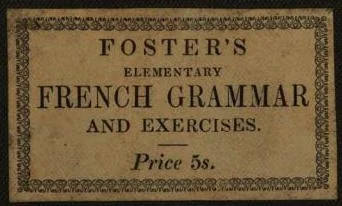The Legend of Edward Foster
///mason.rocket.soda
The Legend of Edward Foster, who died 12 March 1865.
The details that follow are from accounts of his life that were published in his later years and following his death.
Little is known about the childhood of Edward Foster, but in 1780 he joined the Derbyshire Militia as an ensign. Later he volunteered for service with the infantry of the line and was given a lieutenancy in the 20th Regiment of Foot (the Lancashire Fusiliers). His initial spell of active service was spent, under the command of General Cornwallis, during the final stages of the American war of Independence. He later saw extensive foreign service first accompanying the same regiment to Holland in 1799 under the Duke of York and afterwards proceeding to Egypt where he fought at the Battle of Alexandria in 1801.
During his service abroad Foster suffered an eye injury and was posted home in charge of a party of 104 wounded men. After his recover he was ordered to Walmer Castle during the period when a landing on our shores by Napoleon's troops was expected at any time. Admiral Horatio Nelson frequently visited Deal during these days and could often have dined at table with the young Lieutenant Foster. On 21 October 1805, the day of the Battle of Trafalgar, Edward Foster retired from the army at the age of 47, having served since 1780.
Foster was no longer a young man when he left the army, so having always been a good amateur painter, he now decided to put his talents to commercial use. Foster took first to portrait painting at which he was immediately successful. He is also said to have been appointed 'Miniature Painter to the Royal Family' with the special patronage of Queen Charlotte. This association later gave rise to him using the royal crown on picture frame hangers.
Little else is known of his life between 1805 and 1810. It is said that during these years he was allotted rooms in the Round Tower at Windsor Castle and was "drawing master" to the young Princess Amelia. After her death he took up a full-time professional career, mainly as a profile artist.
His trade labels include the words 'From London', so it seems likely that it was in the capital that Foster began his career as an artist. By 1811 he was in Derby, at Mr Abbot's, Trimmer, on Friar Gate. By this time he had begun to use a mechanical means for the preliminary outlines of his silhouettes. The profile machine was reportedly of his own invention.
He was a prolific artist and his clients were numerous and some distinguished such as Lord Byron & Sir Walter Scott. He was, and remains, renowned for his "Red works", profiles painted on red backgrounds of various shades.
A public dinner was held in Derby by Foster's fellow-townsmen to celebrate the old man's hundredth birthday. It was presided over by the Mayor, and during the speeches which followed the meal, many compliments were showered on the guest of honour. In a brief reply, Foster proudly assured his friends that he had 'never known what sickness meant', and that he was still able to earn his living.
The last two years of his life were, however, marred by financial troubles. A grant of £60 was made to him from the Royal Bounty Fund on behalf of Queen Victoria, largely due to the good offices of Lord Palmerston.
Among Foster's other activities during the 1840's and 50's, was the preparation and publication of several educational charts for the use of schools: A Chronological analysis of the Old and New Testament, The Histories of Rome, France and Britain and A Chronological chart of the History of the British Empire.
Foster presented no fewer than 5,344 copies of these charts, free of charge, to parish and other schools. The original manuscripts of some of them are in the Derby Museum.
Foster visited many parts of England but settled in Derby. He married five times. It seems certain that he had seventeen children, only the youngest of whom survived him; this was Phyllis Howard Foster, born when Foster was aged ninety in c. 1852.
He died in Derby, in Parker Street, on 12 March 1865, aged 102 years and 124 days. He was buried on 16 March, in Nottingham Road cemetery, where his grave remains unmarked. Foster's last wife survived him. His burial record states his age as 102.
Although Fosters long life was extraordinary and celebrated at the time, more recent research by Brett Payne casts doubt over Fosters age, his military service, his royal patronages, his family and his inventions. In fact most accounts of his life were provided by Foster himself and often repeated and embellished by others. Little or no factual evidence exists. It would appear that he invented his own early history. As his friend John Haslem stated in 1882, "He was a good hand at spinning a yarn, and in doing so appeared at times to draw somewhat on his imagination."
Despite this, his legend in Derby remains as do his educational charts and his fine body of artistic work. There are dozens of gilt-tinged black and reddish brown silhouettes in public and private collections, signed by him and many with his trademark "Foster & Crown" brass hanger. Of this there is no doubt.
Brett Payne has created a 5 part series detailing the life and works of Edward Foster.
Part 5 can be accessed here.
https://photo-sleuth.blogspot.com/.../edward-foster-part...
The first 4 parts can be accessed from the links in this article. Highly recommended reading.





